Homemade Cleaning Products: Unlock the secrets to a sparkling clean home without breaking the bank or exposing your family to harsh chemicals! Are you tired of deciphering complicated ingredient lists on store-bought cleaners, wondering what exactly you’re spraying around your living space? I know I was! That’s why I dove headfirst into the world of DIY cleaning, and let me tell you, it’s been a game-changer.
The tradition of crafting homemade cleaning products stretches back centuries, long before the advent of mass-produced chemicals. Our grandmothers and great-grandmothers relied on simple, readily available ingredients like vinegar, baking soda, and lemon juice to keep their homes spotless. These time-tested methods are not only effective but also incredibly gentle on the environment.
In today’s world, where environmental consciousness and health concerns are on the rise, the need for safe and sustainable cleaning solutions is more critical than ever. Many commercial cleaners contain harsh chemicals that can irritate skin, trigger allergies, and even contribute to indoor air pollution. By making your own cleaning products, you have complete control over the ingredients, ensuring a healthier and happier home for you and your loved ones. Plus, it’s incredibly satisfying to know you’re reducing your environmental footprint!
Ready to ditch the harsh chemicals and embrace the power of natural cleaning? Let’s dive into some easy and effective DIY recipes that will leave your home sparkling and smelling fresh, all while saving you money and protecting your family’s health. Get ready to transform your cleaning routine with these simple, yet powerful, homemade solutions!
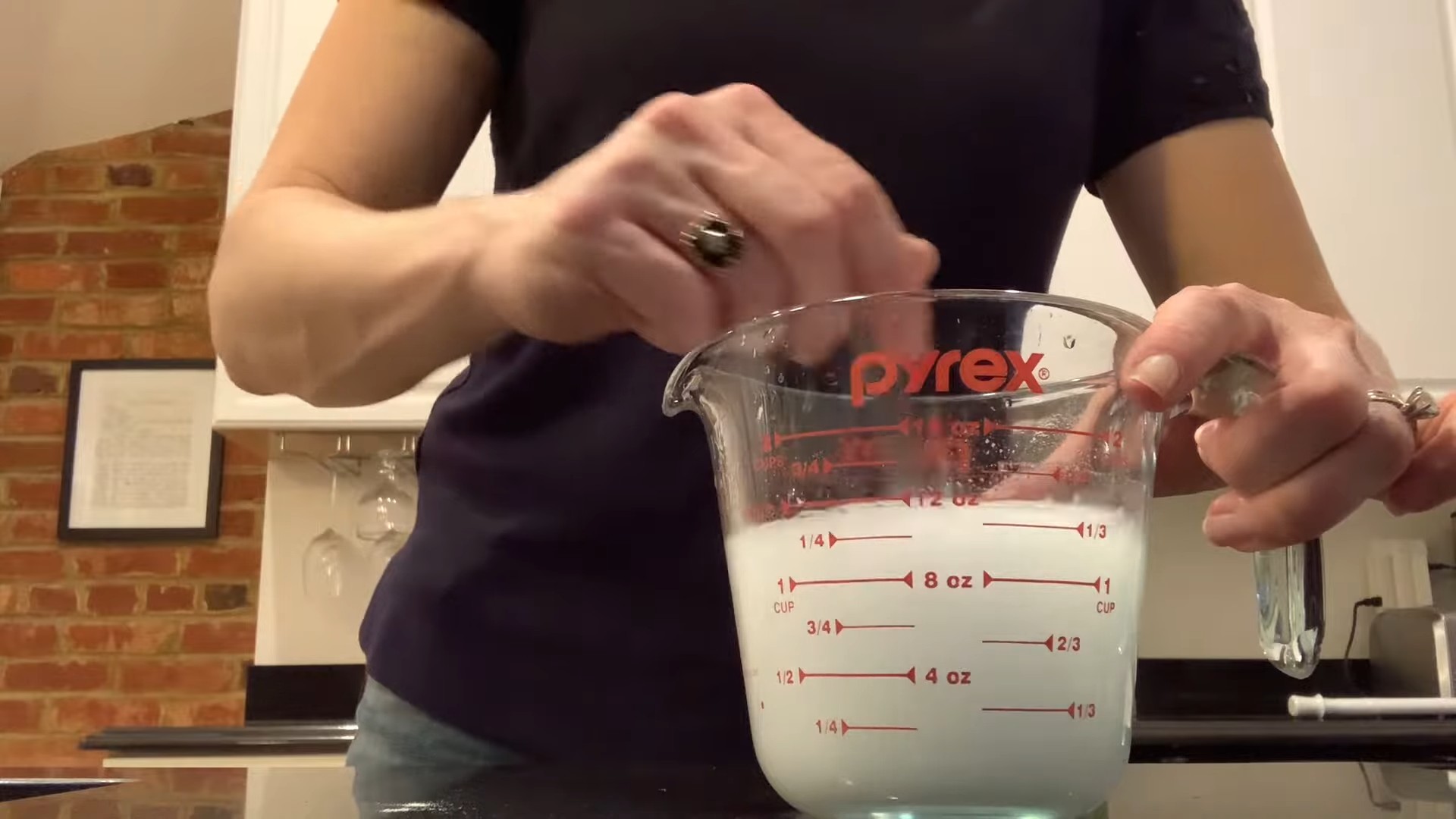
DIY Cleaning Products: Natural, Effective, and Budget-Friendly!
Hey everyone! I’m so excited to share some of my favorite DIY cleaning product recipes with you. Not only are these recipes super easy to make, but they’re also much better for the environment and your wallet than store-bought cleaners. Plus, you know exactly what’s going into them! Let’s dive in!
All-Purpose Cleaner
This is my go-to cleaner for almost everything! It’s perfect for countertops, sinks, appliances, and even floors.
Ingredients:
* 1/2 cup white vinegar
* 1/4 cup baking soda
* 1/2 gallon (8 cups) hot water
* Optional: 10-20 drops of your favorite essential oil (lemon, lavender, tea tree, and eucalyptus are great choices)
* Spray bottle
Instructions:
1. Combine Ingredients: In a large bucket or container, dissolve the baking soda in the hot water. Make sure it’s fully dissolved to avoid any gritty residue.
2. Add Vinegar: Slowly pour in the white vinegar. It will fizz a bit, so don’t be alarmed! This is just the baking soda and vinegar reacting.
3. Add Essential Oils (Optional): If you’re using essential oils, add them now. I love lemon for its fresh scent and antibacterial properties.
4. Mix Well: Stir everything together thoroughly.
5. Transfer to Spray Bottle: Carefully pour the mixture into a spray bottle. You might need a funnel for this.
6. Use and Store: Your all-purpose cleaner is ready to use! Just spray it on the surface you want to clean and wipe it down with a clean cloth. Store any leftover cleaner in a cool, dark place.
Tips and Tricks:
* Vinegar Smell: Don’t worry about the vinegar smell! It dissipates quickly as it dries. The essential oils also help to mask the scent.
* Not for Marble or Granite: Avoid using this cleaner on marble or granite countertops, as the vinegar can etch the surface.
* Stubborn Stains: For stubborn stains, let the cleaner sit for a few minutes before wiping it away.
Glass Cleaner
Say goodbye to streaks with this simple glass cleaner!
Ingredients:
* 1/4 cup white vinegar
* 2 cups water
* Optional: 5-10 drops of essential oil (lemon or peppermint work well)
* Spray bottle
* Microfiber cloth
Instructions:
1. Combine Ingredients: In a spray bottle, combine the white vinegar and water.
2. Add Essential Oils (Optional): If you’re using essential oils, add them now.
3. Shake Well: Shake the bottle well to mix the ingredients.
4. Spray and Wipe: Spray the cleaner onto your windows or mirrors and wipe with a clean microfiber cloth.
5. Buff to Shine: For a streak-free shine, buff the surface with a dry microfiber cloth.
Tips and Tricks:
* Microfiber Cloth is Key: Using a microfiber cloth is essential for streak-free cleaning.
* Avoid Direct Sunlight: Clean windows on a cloudy day or in the early morning or late afternoon to avoid the cleaner drying too quickly and leaving streaks.
* Newspaper Alternative: If you don’t have a microfiber cloth, you can use crumpled newspaper for a similar effect.
Toilet Bowl Cleaner
This toilet bowl cleaner is effective and uses just a few simple ingredients.
Ingredients:
* 1/2 cup baking soda
* 1 cup white vinegar
* Optional: 5-10 drops of tea tree essential oil (for its antibacterial properties)
Instructions:
1. Sprinkle Baking Soda: Sprinkle the baking soda into the toilet bowl.
2. Pour Vinegar: Slowly pour the white vinegar over the baking soda. It will fizz.
3. Let it Sit: Let the mixture sit for at least 15-20 minutes, or even overnight for tougher stains.
4. Scrub and Flush: Scrub the toilet bowl with a toilet brush and then flush.
5. Add Essential Oil (Optional): Add a few drops of tea tree oil after flushing for extra disinfecting power.
Tips and Tricks:
* Overnight Treatment: For really tough stains, let the baking soda and vinegar mixture sit overnight.
* Regular Cleaning: Use this cleaner regularly to prevent stains from building up.
* Borax Alternative: For extra cleaning power, you can add 1/4 cup of borax to the baking soda before adding the vinegar.
Laundry Detergent
Making your own laundry detergent is surprisingly easy and can save you a lot of money!
Ingredients:
* 1 cup washing soda (sodium carbonate)
* 1 cup borax (sodium borate)
* 1 bar of castile soap (like Dr. Bronner’s), grated
* Optional: 10-20 drops of essential oil (lavender, lemon, or eucalyptus)
Instructions:
1. Grate the Soap: Grate the castile soap using a cheese grater.
2. Combine Ingredients: In a large bowl, combine the washing soda, borax, and grated soap.
3. Add Essential Oils (Optional): If you’re using essential oils, add them now.
4. Mix Well: Mix all the ingredients together thoroughly.
5. Store: Store the laundry detergent in an airtight container.
6. Use: Use 1-2 tablespoons of detergent per load of laundry, depending on the size and soil level of the load.
Tips and Tricks:
* Washing Soda vs. Baking Soda: Make sure you’re using washing soda (sodium carbonate), not baking soda (sodium bicarbonate). Washing soda is a stronger cleaner. You can usually find it in the laundry aisle of your grocery store.
* Castile Soap: Castile soap is a gentle and effective cleanser made from vegetable oils.
* Dissolving Issues: If you find that the detergent isn’t dissolving completely in cold water, you can dissolve it in a small amount of hot water before adding it to the washing machine.
* Adjust Amount: Adjust the amount of detergent you use based on your water hardness and the soil level of your clothes.
Dish Soap
This DIY dish soap is gentle on your hands and effective at cleaning dishes.
Ingredients:
* 1 cup hot water
* 1/4 cup liquid castile soap
* 1 tablespoon white vinegar
* 10-15 drops of essential oil (lemon, grapefruit, or orange)
* Soap dispenser
Instructions:
1. Combine Ingredients: In a bowl, combine the hot water, castile soap, and white vinegar.
2. Add Essential Oils: Add the essential oils.
3. Mix Gently: Gently stir the ingredients together. Avoid creating too many bubbles.
4. Transfer to Soap Dispenser: Pour the mixture into a soap dispenser.
5. Use: Use as you would regular dish soap.
Tips and Tricks:
* Gentle Mixing: Be careful not to over-mix the ingredients, as this can create too many bubbles and make the soap less effective.
* Adjust Water: If the soap is too thick, add a little more water until you reach the desired consistency.
* Not for Dishwashers: This dish soap is not suitable for use in dishwashers.
Furniture Polish
Give your wooden furniture a natural shine with this simple polish.
Ingredients:
* 1/4 cup olive oil
* 1 tablespoon white vinegar or lemon juice
* Soft cloth
Instructions:
1. Combine Ingredients: In a small bowl, combine the olive oil and vinegar or lemon juice.
2. Apply to Furniture: Dip a soft cloth into the mixture and apply a thin layer to your wooden furniture.
3. Buff: Buff the furniture with a clean, dry cloth until it shines.
Tips and Tricks:
* Test in Unseen Area: Before polishing your entire piece of furniture, test the mixture in an inconspicuous area to make sure it doesn’t damage the finish.
* Less is More: Use a small amount of polish to avoid leaving a greasy residue.
* Frequency: Polish your furniture every few months to keep it looking its best.
Oven Cleaner
Cleaning the oven is never fun, but this DIY cleaner makes it a little easier.
Ingredients:
* 1/2 cup baking soda
* Water
* Spray bottle with white vinegar
Instructions:
1. Make a Paste: Mix the baking soda with enough
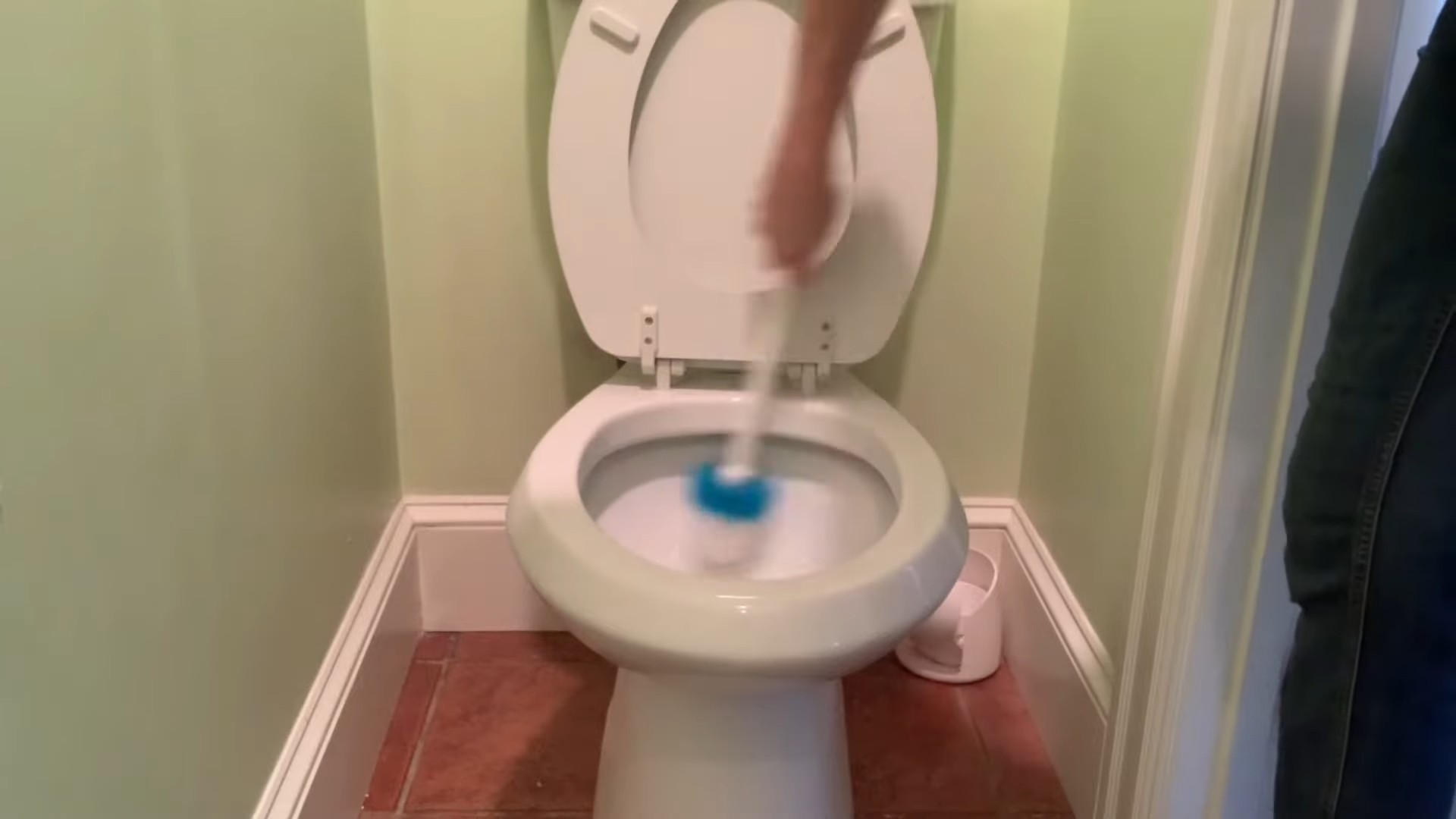
Conclusion
So, there you have it! Ditching the harsh chemicals and embracing the power of homemade cleaning products is not just a trend; it’s a conscious choice for a healthier home, a happier planet, and a lighter wallet. We’ve explored some fantastic recipes that are surprisingly simple to whip up, using ingredients you likely already have in your pantry.
Why is this a must-try? Because you’re taking control. You know exactly what’s going into your cleaning solutions, eliminating the mystery and potential health risks associated with commercial products. You’re reducing your plastic consumption, contributing to a more sustainable lifestyle. And, let’s be honest, there’s a certain satisfaction in creating something effective and eco-friendly yourself.
But the beauty of homemade cleaning lies in its adaptability. Feel free to experiment with essential oils to create your signature scents. Lavender for calming, lemon for invigorating, tea tree for its antibacterial properties – the possibilities are endless! You can also adjust the ratios of ingredients to suit your specific needs and preferences. For instance, if you have particularly stubborn grime, you might want to increase the concentration of vinegar in your all-purpose cleaner. Or, if you prefer a thicker consistency for your scrub, add a bit more baking soda.
Consider these variations:
* **Citrus Infusion:** Infuse your vinegar with citrus peels (lemon, orange, grapefruit) for a few weeks before using it in your cleaners. This adds a delightful fragrance and boosts its cleaning power.
* **Herbal Power:** Add dried herbs like rosemary, thyme, or sage to your vinegar infusion for added antibacterial and antifungal benefits.
* **Castile Soap Boost:** For extra cleaning power, add a small amount of castile soap to your all-purpose cleaner or dish soap recipe.
* **DIY Disinfectant Spray:** Combine equal parts white vinegar and water with a few drops of tea tree oil for a natural disinfectant spray.
We truly believe that once you experience the effectiveness and simplicity of homemade cleaning products, you’ll never go back to store-bought alternatives. It’s a small change that can make a big difference, both for your home and the environment.
Now, it’s your turn! We encourage you to try these recipes, experiment with different variations, and discover your own favorite combinations. Don’t be afraid to get creative and personalize your cleaning routine.
And most importantly, we want to hear about your experiences! Share your successes, your failures, and your unique twists on these recipes in the comments below. Let’s build a community of eco-conscious cleaners and inspire others to make the switch to homemade cleaning products. What are you waiting for? Get cleaning!
Frequently Asked Questions (FAQs)
Q: Are homemade cleaning products as effective as store-bought cleaners?
A: In many cases, yes! The effectiveness of homemade cleaning products depends on the specific recipe and the type of cleaning you’re doing. Ingredients like vinegar, baking soda, lemon juice, and essential oils possess natural cleaning, disinfecting, and deodorizing properties. For everyday cleaning tasks, these homemade solutions can be just as effective, if not more so, than their commercial counterparts. However, for heavy-duty cleaning or disinfecting in situations where strong pathogens are present (e.g., after a serious illness), you might need to consider using a commercial disinfectant. It’s all about choosing the right tool for the job.
Q: What are the safety precautions I should take when making and using homemade cleaning products?
A: Safety is paramount, even with natural ingredients. Always label your homemade cleaning solutions clearly to avoid accidental ingestion or misuse. Store them out of reach of children and pets. While the ingredients are generally safe, avoid mixing certain combinations, such as vinegar and bleach, as this can create toxic fumes. When using essential oils, be mindful of potential allergies or sensitivities. Dilute essential oils properly and avoid direct contact with skin and eyes. If you have sensitive skin, wear gloves when cleaning. Always test a small, inconspicuous area before applying any new cleaning solution to a larger surface.
Q: Can I use homemade cleaning products on all surfaces?
A: Not necessarily. While many homemade cleaning products are versatile, some surfaces require special care. For example, vinegar can be too acidic for natural stone surfaces like marble or granite, potentially causing etching or damage. Similarly, abrasive cleaners like baking soda might scratch delicate surfaces. Always check the manufacturer’s recommendations for cleaning specific surfaces. When in doubt, test the cleaning solution on a small, hidden area first to ensure it doesn’t cause any adverse effects. Wood furniture should be treated with care, avoid excessive moisture.
Q: How long do homemade cleaning products last?
A: The shelf life of homemade cleaning products varies depending on the ingredients. Solutions containing water are more prone to bacterial growth and should be used within a few weeks. Vinegar-based cleaners tend to last longer due to vinegar’s natural preservative properties. Essential oils can also help extend the shelf life of your homemade cleaners. To maximize longevity, store your cleaning solutions in airtight containers in a cool, dark place. If you notice any changes in color, odor, or consistency, it’s best to discard the solution and make a fresh batch.
Q: Are there any essential oils I should avoid using in my homemade cleaning products?
A: While most essential oils are safe for cleaning, some may be more irritating or allergenic than others. Avoid using essential oils that you know you are allergic to. Some essential oils, like citrus oils, can be photosensitive, meaning they can increase your skin’s sensitivity to sunlight. If you’re using citrus oils in your cleaning products, avoid direct sun exposure after application. When cleaning around pets, be cautious with essential oils like tea tree oil, as they can be toxic to animals if ingested. Always research the safety of essential oils before using them, especially if you have children, pets, or sensitivities.
Q: Can I use tap water to make my homemade cleaning products?
A: While tap water is generally safe to use, using distilled water can help extend the shelf life of your homemade cleaning products and prevent mineral buildup. Tap water contains minerals and impurities that can react with the cleaning ingredients, potentially reducing their effectiveness or causing cloudiness. Distilled water is purified and free of these impurities, resulting in a cleaner, more stable solution.
Q: What’s the best way to dispose of leftover homemade cleaning products?
A: Since homemade cleaning products are made with natural ingredients, they are generally safe to dispose of down the drain. However, avoid pouring large quantities of undiluted vinegar or essential oils down the drain, as this could potentially disrupt the balance of your septic system. Dilute the solution with plenty of water before disposal. If you’re unsure about the proper disposal method, consult your local waste management guidelines.

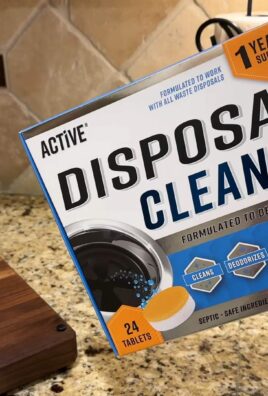
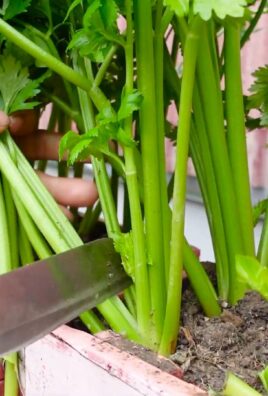
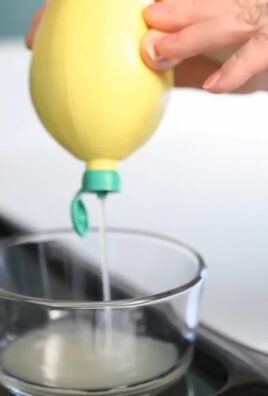
Leave a Comment